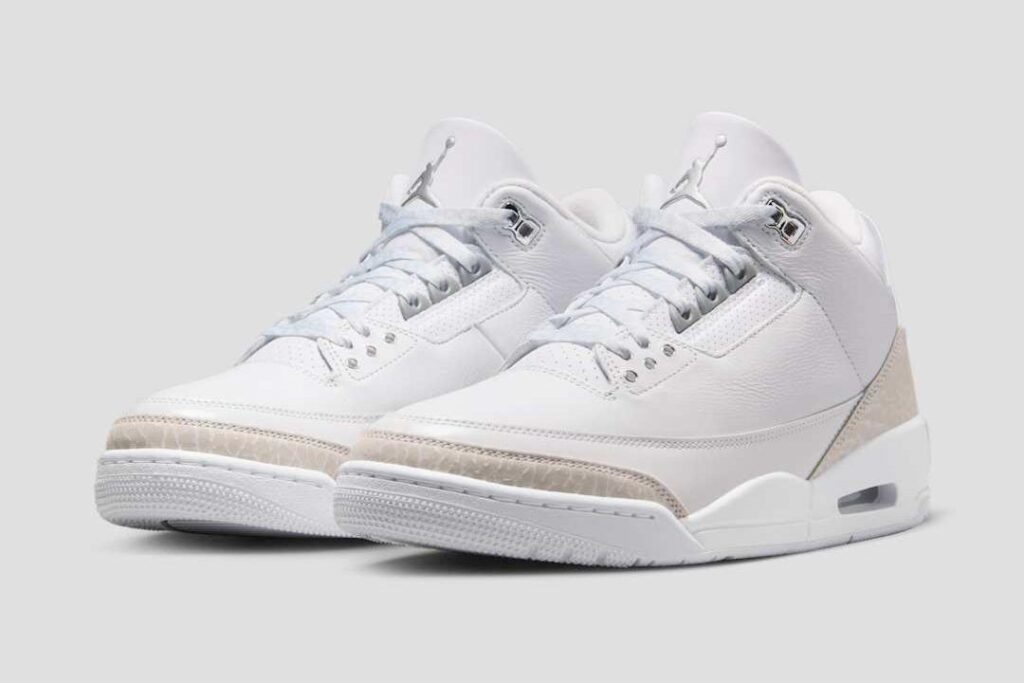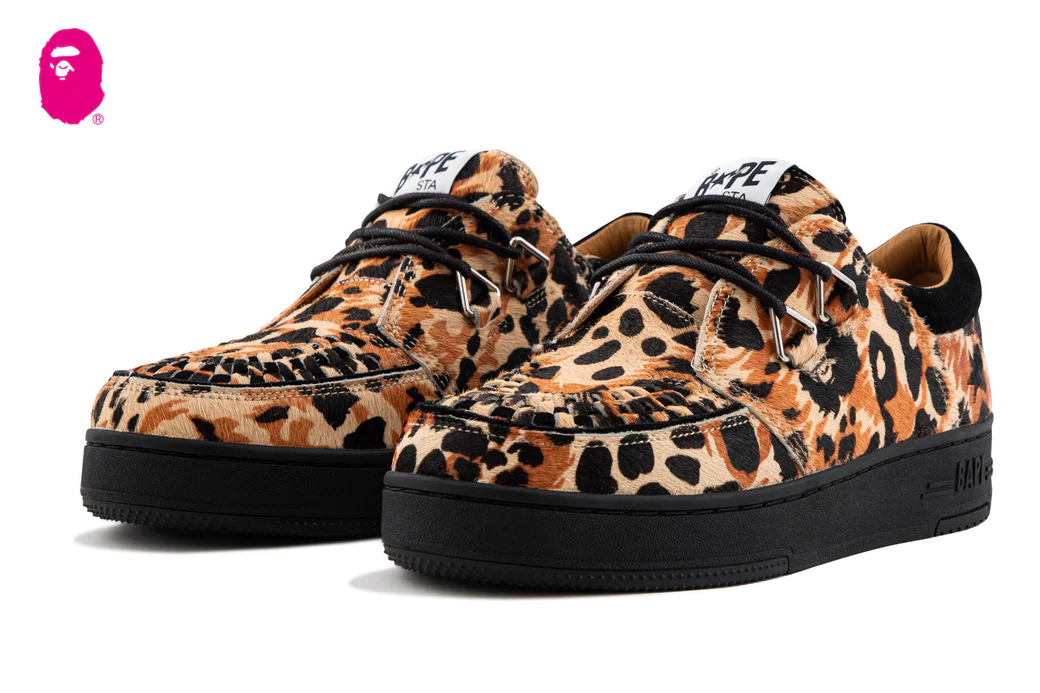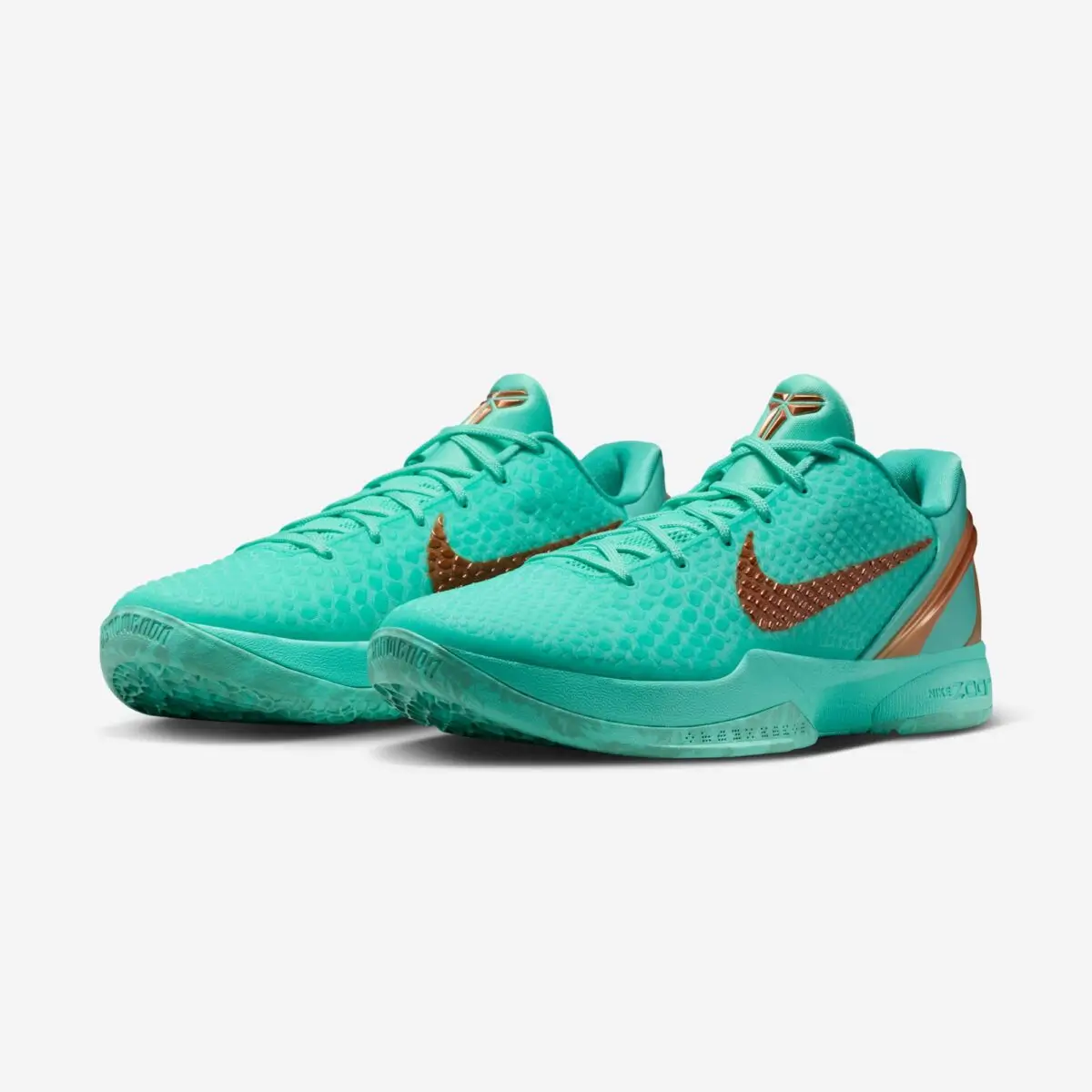In the world of shoes, few silhouettes carry the gravitas of the Air Jordan 3. Designed in 1988 by Tinker Hatfield, the shoe not only redefined the Air Jordan brand but also reshaped how basketball shoes were marketed, styled, and collected. While the original releases leaned into bold accents—like the Fire Red and the Cement Grey—it was the 2007 and 2017 releases of the Air Jordan 3 Retro “Pure Money” that quietly asserted a new kind of power: the power of restraint.
With its all-white palette and metallic silver detailing, the “Pure Money” edition trades loudness for refinement, spectacle for simplicity. But beneath its sleek exterior lies a rich vein of cultural, aesthetic, and historical meaning.
Minimalism Meets Legacy: The Aesthetic Impact
At first glance, the Air Jordan 3 “Pure Money” is deceptively simple. It features a monochromatic white leather upper with matching elephant print overlays, white midsoles, and silver lace eyelets for subtle shine. The Jumpman logo on the heel, traditionally a site of branding bravado, is rendered in tonal white, allowing the silhouette itself to take center stage.
This restrained colorway transforms the typically rugged and athletic Jordan 3 into something closer to high fashion—pristine, modern, and quietly aggressive. It draws on a long tradition of minimalist design: the architectural precision of Le Corbusier, the industrial clarity of Dieter Rams, and even the monochrome canvases of artists like Robert Ryman. In streetwear terms, it parallels the rise of clean, tonal outfits where the absence of color becomes a statement of its own.
Yet unlike all-white shoes that fade into the background, the “Pure Money” Jordan 3 is unavoidably eye-catching. The robust construction, visible Air unit, and high-profile history make it a sneaker that commands presence without shouting.
The Original Jordan 3 and the Stakes of Reinvention
To understand why the “Pure Money” version resonates, one must first return to 1988. The original Air Jordan 3 was a critical pivot point. Michael Jordan was reportedly considering leaving Nike, frustrated by the design direction of the first two Jordans. Enter Tinker Hatfield, who not only created a shoe that suited Jordan’s needs but introduced lasting innovations like the visible Air-Sole unit and the debut of the elephant print. The mid-cut design also set it apart from the bulkier high-tops of the time.
This was the footwear Jordan wore during his famous 1988 Dunk Contest victory. It was immortalized on posters, in commercials, and in the collective memory of basketball fans. The Jordan 3 became more than a performance shoe—it became part of a mythology.
When Jordan Brand released the “Pure Money” edition in 2007, it wasn’t just selling a shoe—it was recontextualizing a piece of history. Gone were the vibrant accents. What remained was the form, stripped down to its essence, allowing wearers to engage with the shape, texture, and silhouette in a new way.
2007 to 2017: The White Sneaker in Cultural Transition
The “Pure Money” colorway arrived in 2007 during a transition in shoe culture. The early 2000s had been defined by bold, sometimes garish colorways and a flood of new tech-driven designs. But by the mid-2000s, a subtle shift was underway. Designers, stylists, and collectors began gravitating toward tonal minimalism—an echo of broader shifts in fashion and music.
The “Pure Money” fit perfectly into this evolution. It was versatile enough for casual outfits, clean enough for upscale streetwear, and rare enough to catch attention. Its release tapped into a rising generation of sneakerheads who were less interested in NBA fandom and more attuned to the aesthetics of design, photography, and digital identity.
The 2017 reissue reintroduced the model with almost identical detailing, cementing its legacy and making it more accessible to younger audiences who had missed the 2007 drop. By then, all-white sneakers were firmly embedded in streetwear orthodoxy—appearing in runway shows, rap videos, and on the feet of influencers around the world.
Materials and Construction: Performance vs Prestige
While the Jordan 3 remains fundamentally a basketball shoe, the “Pure Money” version is more often worn for lifestyle purposes than for hardwood performance. The full-grain leather upper, while durable, takes on a different tone when dressed in all white—it’s no longer just supportive; it’s sculptural.
The midsole cushioning remains faithful to the original, featuring Nike Air in the heel and forefoot, with a polyurethane build for support. However, for most wearers, the appeal lies not in court-ready functionality, but in the feeling of stepping into a design classic. The crisp, ice-clean finish means that every scuff and stain becomes a mark of ownership—a record of wear, memory, and individuality.
Interestingly, this paradox adds to its allure. White shoes are notorious for being hard to keep clean, yet they’re precisely the ones most desired by collectors. The “Pure Money” Jordan 3 plays into this tension: it is pristine, yet perishable; luxurious, yet vulnerable.
A Name Worth Its Weight
The term “Pure Money” isn’t arbitrary. It was part of a naming trend in the mid-2000s where Jordan Brand began associating certain colorways with lifestyle themes. “Pure Money” suggested value, clarity, and worth. It was not about ostentation but about substance—the shoe as a kind of monetary object, an investment in taste.
This framing repositions the sneaker from something that performs functionally to something that performs symbolically. It signals cleanliness, precision, even aspiration. The wearer of the “Pure Money” isn’t just someone with good taste—they’re someone who values detail, who curates their look with intention.
Legacy and Resurgence
Today, the Air Jordan 3 “Pure Money” continues to enjoy relevance in fashion cycles that swing between maximalism and restraint. Its presence in online sneaker forums, resale platforms, and outfit moodboards keeps it in constant rotation. Unlike some colorways that feel fixed to a moment in time, “Pure Money” retains a timelessness that transcends trends.
For many, it represents a gateway into the Jordan archive—a shoe that’s easier to wear daily than louder, more experimental releases. For others, it remains a piece of nostalgia from a formative period in their relationship with fashion and culture.
Whether styled with technical outerwear, distressed denim, or tailored fits, the Air Jordan 3 “Pure Money” adapts while staying unmistakably itself.
Impression
In an era where shoe drops often rely on wild palettes, hype-driven marketing, and flashy collabs, the Air Jordan 3 “Pure Money” remains a striking example of design confidence. It proves that the most resonant objects are not always the loudest. Sometimes, it is the quiet, disciplined silhouette—the one rendered in just one color—that speaks loudest to our collective sense of taste.
It is a reminder that in footwear culture, as in art, minimalism can be radical, and white isn’t blank—it’s a canvas.
No comments yet.








